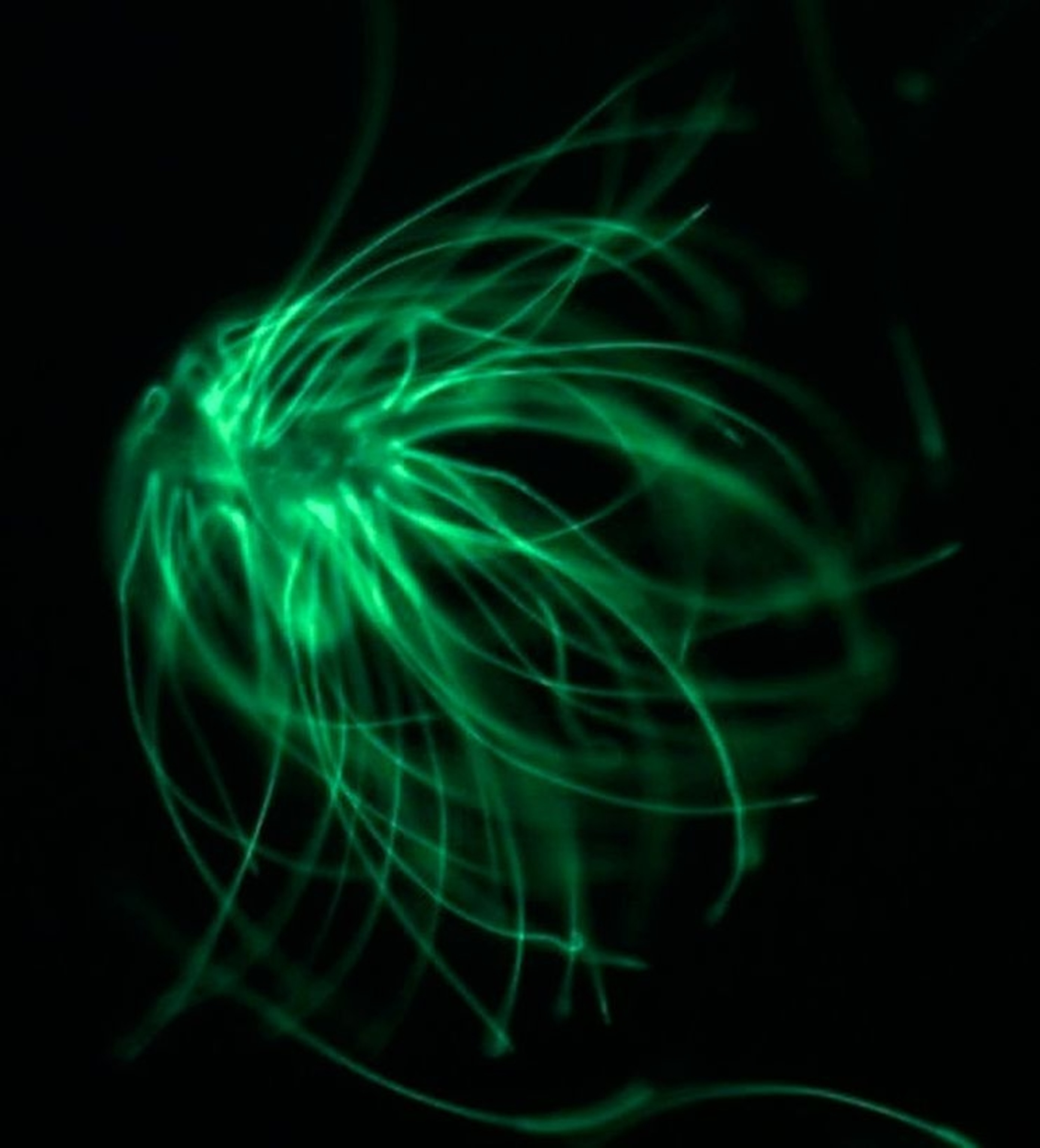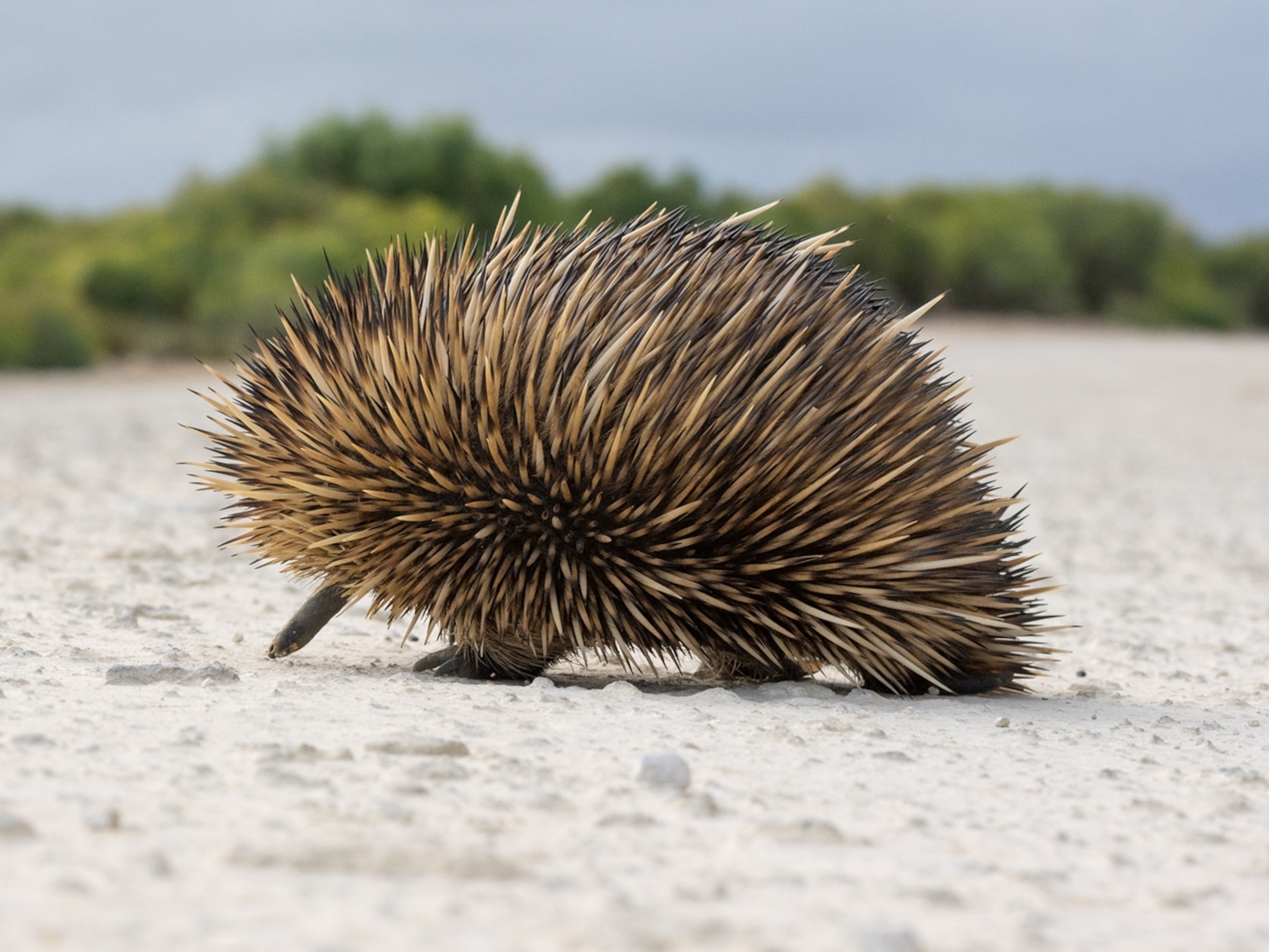
Sperm Recognize "Brothers," Team Up for Speed
Red and green glowing sperm revealed "amazing" behavior in mice.
In promiscuous mouse species, sperm team up with their closest kin to give themselves an edge in the dash for the egg, a new study finds.
Once inside a female, sperm cells can discern and—via structures on their heads—literally hook up with their brethren amid the crush of sperm from other males. (Related: "How a Man Produces 1,500 Sperm a Second.")
The cells can then draft, Lance Armstrong-style, moving faster than they could alone thanks to more "engine" power from the cluster, said study co-author Heidi Fisher, an evolutionary geneticist at Harvard University's Hoekstra Laboratory.
"It's really amazing that this single cell can do this," Fisher said. "We used to think of sperm as packs of DNA with really fast tails. But [now we know] they're able to make these complex organizations."
(How a Man Produces 1,500 Sperm a Second)
Surprisingly, the sperm cells' recognition skills are "incredibly refined," Fisher added: In the experiments, sperm could pick out other sperm from the same male, even when the other sperm were from closely related mice.
Evolution Driving Sperm Teamwork
Fisher and colleague Hopi Hoekstra studied the oldfield mouse, which mates for life, and a related species, the highly promiscuous white-footed mouse. Female white-footed mice will mate with multiple males several times within a minute.
The team extracted sperm from several individuals of each species and mixed two samples in four different combinations. For instance, one experiment mixed sperm from two unrelated oldfield mice while another looked at sperm from two white-footed mouse "brothers." (The sperm carry both male and female chromosomes.)
In each case, sperm from one male was dyed to glow green under UV light, while the other's sperm glowed red.
In both species, sperm formed groups, which swim significantly faster than single cells.
But in every experiment involving white-footed mice, the sperm clustered specifically with their brothers—though how the cells recognized each other is still unknown. One theory is that related sperm express a certain protein on their heads that acts as an identifier, the authors write in their study.
Also worth noting, Fisher said, is that the teamwork lasted just two hours or less, until the sperm reached the egg: The brotherly love ended when individuals became rivals for breaching the egg.
By contrast, the oldfield mouse sperm formed random groups without family ties, according to the study, published January 20 in the journal Nature.
The results support the long-held view that competition drives the evolution of sperm behavior, Fisher said. (Read how sex can speed up evolution.)
Sperm Study Has Limitations
The Nature study is "really intriguing, and broadly supportive of ideas people have been kicking around," said Rhonda Snook, who studies the evolution of sperm form and function at the U.K.'s University of Sheffield. But she pointed out two limitations to the research.
For one, there's not yet a method for observing sperm inside female mice, and it's possible sperm behave differently in the reproductive tract than they do in a petri dish, Snook said.
Also, the study examines just one promiscuous and one monogamous species—it's still unclear whether sperm cluster with relatives in other mammal species, 95 percent of which are promiscuous. There's no evidence, for example, that human sperm band together.
Overall, Snook added, the new study highlights recent advances in fluorescent-imaging techniques, which are now allowing scientists for the first time to label which sperm come from which male. (See pictures of animals made to glow for science.)




